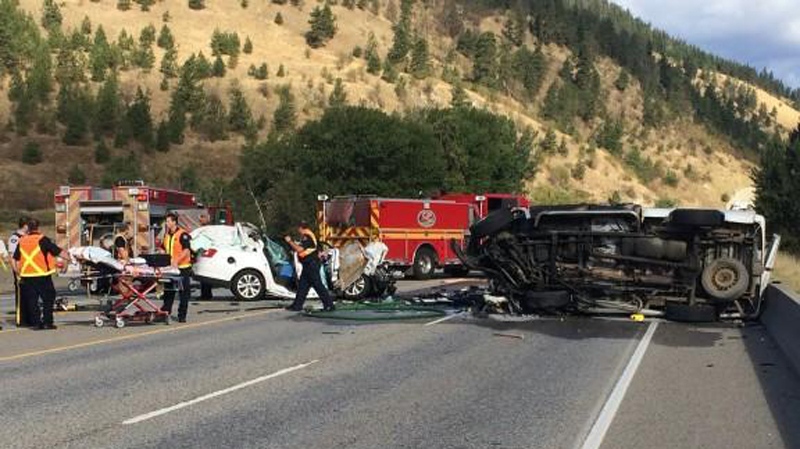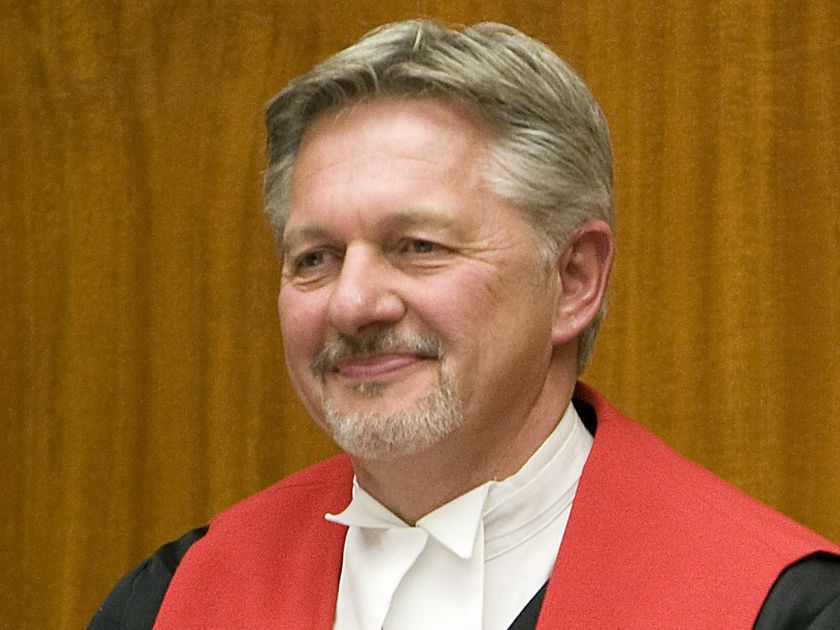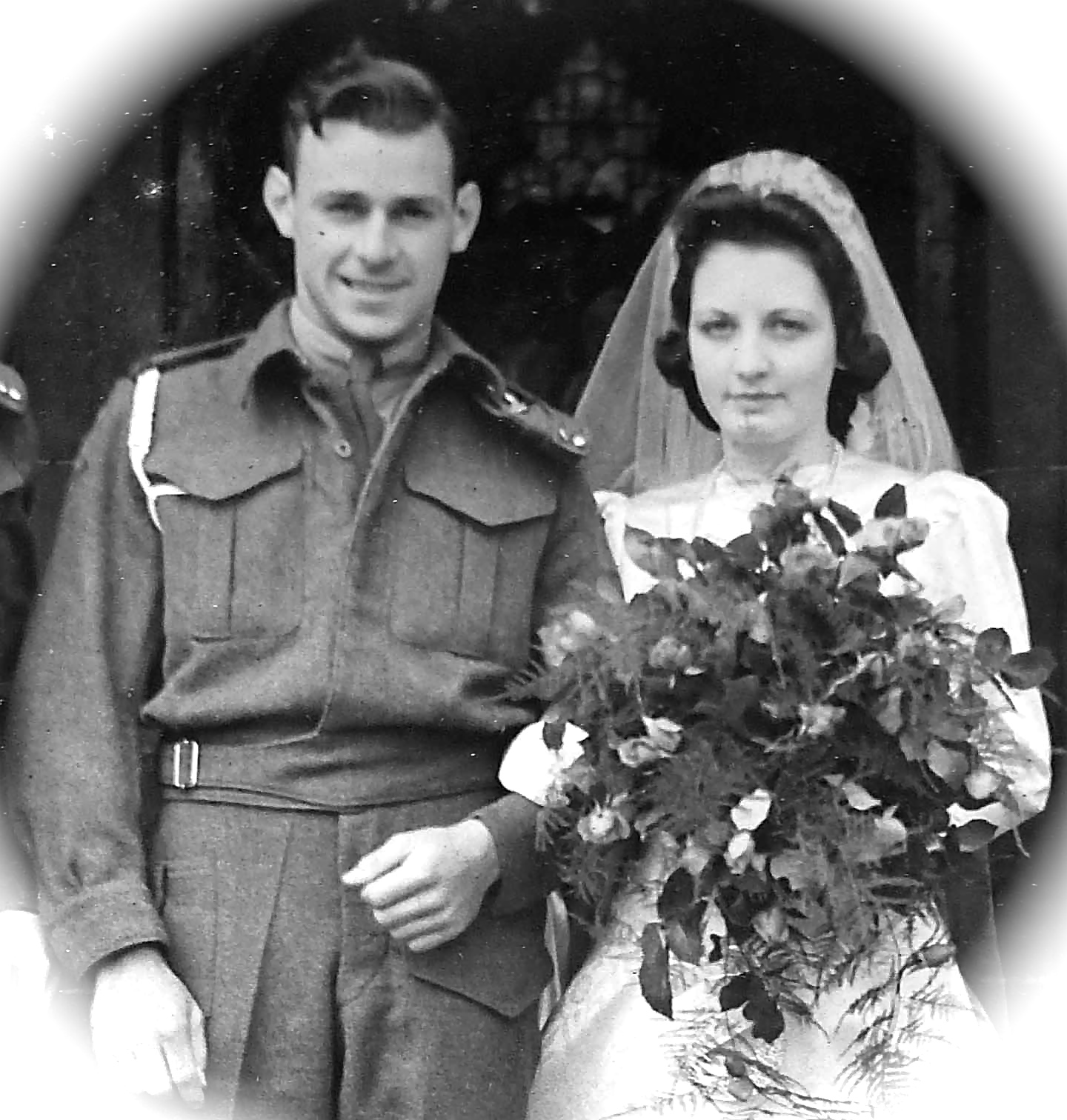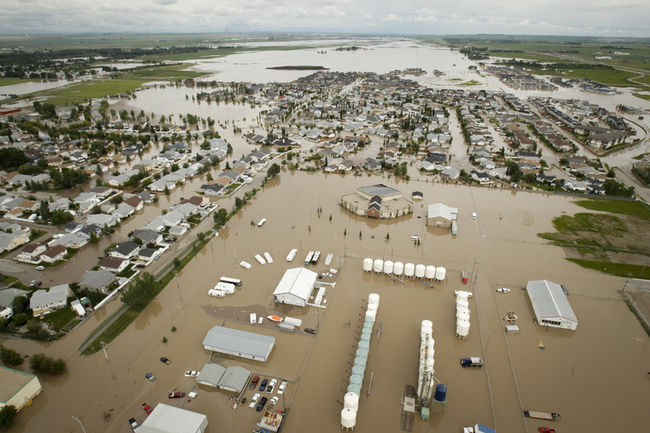Canada: That Which Makes us One
Diversity in Canada Has The Capacity to Inspire The World
Celebrating at a Ukrainian Christmas (1) dinner gave me pause to think about how these cultural
celebrations help to define Canada – that which makes us one. One dinner you ask? Well, it goes much deeper as it also includes coffee breaks at Tim Hortons, restaurants and the Canadian Soccer teams. It all fits into the fabric of our national identity.
1. A Ukrainian Dinner Celebration
On Sunday, January 6, 2019, Lynn and I went to dinner on the eve of Ukrainian Christmas at the home of one of my former police partners. We both retired twenty-five years ago and for years our families lived a stone’s throw from one another in West Saanich. Ukrainian Christmas was, and is, always a big celebration in their home (1). In addition to Al and Mary and their immediate family, three other couples, also long retired police members and their wives, were at the table of eighteen.
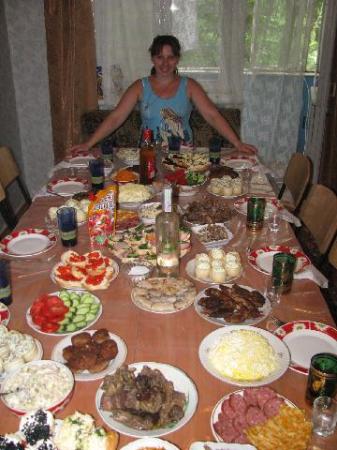 As we dined, surrounded by that uniquely Ukrainian bounty, we were not just celebrating a special event in the Gregorian calendar year, we were celebrating what it means to be Canadian. That feast and those friends served to remind us of how fortunate we are to live at peace in a mix of cultures, languages, traditions, religions, and varieties of food types that is unprecedented in the world. It is a mix that accompanies us every day, not just on special occasions.
As we dined, surrounded by that uniquely Ukrainian bounty, we were not just celebrating a special event in the Gregorian calendar year, we were celebrating what it means to be Canadian. That feast and those friends served to remind us of how fortunate we are to live at peace in a mix of cultures, languages, traditions, religions, and varieties of food types that is unprecedented in the world. It is a mix that accompanies us every day, not just on special occasions.
Photo (Web source). This table represents about half the set for our special meal. All items were prepared at home and served piping hot.
2. Tim Horton’s and McDonald’s: The coffee crowd
Earlier in the day (Sunday), I made a couple of visits to Tim Hortons at the Royal Oak Shopping Centre (2). It was, as usual, overflowing. I grabbed a seat beside an acquaintance from Syria. He and his delightful family are making their way in a new country they now call home. When he left for an appointment, I struck up a conversation with the man on my right, a person I did not know.
(322)
The Changing Landscape of Politics in Canada
The Changing Landscape of Politics in Canada:
August 24, 2018: With the bombshell just dropped by Maxime Bernier, this post, which I began researching and writing a couple of months back, has taken on new significance. There seems little doubt that at least some of the unseemly tactics that plagued the recent Ontario election will also mark the next federal election. The question asked, and which I try to answer is, “to what extent will the effective use of social media define the winners and losers?”
And, this post will also outline why I think, in a four-party system, it is possible that 65% of Canadians who split the vote between three parties, could hand a majority to 35% who didn’t vote for one of those three. It is also a process by which a man such as Doug Ford could, in the federal election following the next, become the Prime Minister of Canada. (2008 Federal election split) (2011 Federal election split)
1. Party Platforms, where did they go?
In the past, party platforms were meant to draw voters to a particular set of principles developed by a party over months and years (1). They were the centrepiece of every election campaign and, there was plenty of room for debate at all candidate meetings from the party leaders to grassroots. However, in this new age, winning or losing seems to be based more on who best controls the message and who owns the most effective means of smearing an opponent or idea (2). If you followed the leadup to the Brexit vote or the last US election, the winning sides resorted almost exclusively to messages of fear and hate, mixed with a good measure of fake news.
(720)
Are insurance rates soaring across BC?
Scenes like this are all too common in BC and take a tragic toll in lives lost and families destroyed. The cost is high and we all pay but are Insurance Rates out of control in B.C.? Check out this article, as you may be surprised to see where British Columbia sits in relation to other Provinces.
This article is brought forward following an article in the Saanich News stating ICBC rates for some classes of vehicles are grossly inflated as compared to Alberta. Also included are recent updates.
Updated: February 10, 2020
Further to the update below (February 1, 2020), I note that since the government announced a “No-Fault” insurance plan for BC, Robert Mulligan is taking a slightly different tack, suggesting that no-fault will only increase the problems by taking away the right of an injured party to sue.
I’ve copied just one sentence from Mulligan’s longer discussion, “And I think people don’t like the idea that somebody who’s, for example, was drunk and ran into you and you become a quadriplegic is going to be treated exactly the same way you would in terms of getting benefits (go to minute 00:15:26 to see his full comment)
Statements like this appear to be simple fear-mongering. As was the case in the past, people who commit criminal offences, as well as other forms of negligence while driving, may well lose their insurance coverage and in all likelihood would be sued by ICBC to recover costs of the claim. (Link here to Mulligan’s full conversation on CFAX radio)
Updated: February 7, 2020
It is reported ICBC is heading for a 20% rate reduction and largely cutting out lawyers in a change to No-Fault insurance. This will be the largest change to ICBC in several years and will hopefully place the Crown Corporation back on an even keel.
It will be interesting to see how trial-lawyers who earn a large part of their income from ICBC, and the Conservative (aka Liberals) opposition in the Legislature, respond to these changes.
That being said, a February 1, 2020 article by Robert Mulligan, an experienced trial-lawyer, suggested implementing several of the changes currently being proposed by the government.
This will be explored more fully over the next few days.
Read more at CBC Major Overhall of ICBC
Also, a Times Colonist report: Major overhaul at ICBC would limit the ability to sue, cut rates by 20%
Update: February 1, 2020
For an interesting update of the challenges facing ICBC, read a CFAX interview with Robert A. Mulligan titled, “Extinguishing the ICBC Dumpster Fire“. You should disregard the title of the article as it was prepared by a media outlet and does not reflect the considered opinion of a respected, practicing lawyer here in Victoria.
Update: August 20, 2019.
A further article debunks the statement that ICBC rates are soaring and that they are among the highest in Canada: BC News Outlets Exaggerated the Costs of ICBC Insurance
Update: August 13, 2019.
A Global News broadcast this afternoon quoted heavily from an article prepared by the Insurance Bureau of Canada, an Ontario based private enterprise organization that promotes private insurance, which states BC has the highest auto insurance rates in Canada and that rates could be lowered through ‘competition’. There was also an article in the Saanich News which similarily quoted the IBC information and also indicated ICBC is facing a huge deficit. The article made no mention of the considerable sums of money the government has removed from Crown Corporations such as ICBC and BC Hydro.
I have reached out to friends in the Auto Insurance industry to have them fact check the calculations I quote in order to ensure they have legitimacy. (Updated August 14, 2019 – hit the continue reading below for the original article and other updates)
(1118)
Church and State
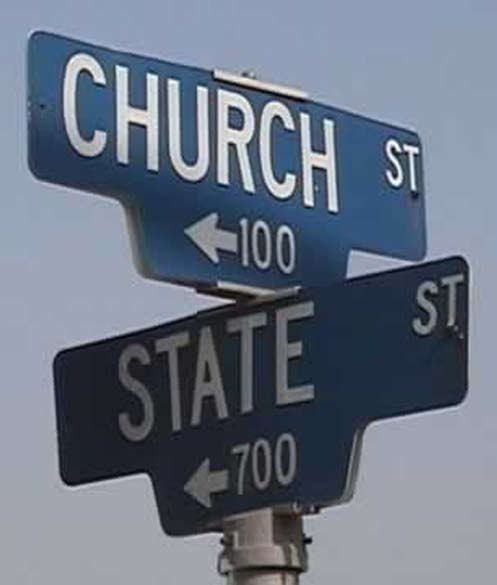 Church and State Street: The Canadian Experience
Church and State Street: The Canadian Experience
Canada has made considerable progress over the past 150 years (mainly within the past 100 years) in advancing individual rights, particularly those of women, children, visible minorities, and lifestyle. Yet, many openly practice discrimination with impunity, and their right to do so is protected in our Charter of Rights and Freedoms.
It is an unusual situation in which a more accepting set of human values is applied by those considered to be non-religious, than is applied by Christians, Muslims, Jews and other faith-based organizations in their approach to those values.
Link Here for a 2014 historical perspective on Church and State
A continuing Conflict Zone In Canada
As Canada continues working to balance Church and State roles, we have much rocky terrain yet to negotiate. There is little doubt an open debate would be helpful, but if the current flashback and heated rhetoric over the wording of a government funding application is an example, the time has yet to arrive. It is unlikely any current government, Liberal, Conservative or NDP, would dare open the discussion as an election issue. Hence, it will be up to occasional bold government action and the courts to draw the line, as did Trudeau in 1969 when the Liberals removed abortion from the Criminal Code. Then, again, in 1982, the same government brought home the Constitution and developed the Canadian Charter of Rights and Freedoms.
Since then, a series of court, parliamentary and legislative decisions at the provincial and federal levels have helped push forward individual rights, particularly those affecting women, children, visible minorities and the LGBTQ community. While women have made considerable gains, many barriers still stand in their path as they march towards equality with men. (For an earlier article on the subject link to Women’s Suffrage.)
On a side note regarding my career in the police, when I first started in 1964, there were no sworn female members. The first came on board in the late 1970s, and as of 2023, the force is equally divided between male and female sworn officers, including Sergeants and a Deputy Chief. How many police departments in Canada, large or small, could match that division?
(4186)
R. vs. Stanley: Saskatchewan Court of Queens Bench
Martel D. Popsecul, Chief Justice
Presiding over the R. vs. Stanley Trial
The following Charge to the Jury by Chief Justice of the Court of Queen’s Bench for Saskatchewan, the Honourable Martel D. Popescul, is likely the most reliable document yet published providing insight into the R. vs Stanley trial.
(This post outlines my analysis of why I think the Chief Justice led the Jury directly to a finding of not guilty. It was not a directed verdict in the usual sense, but his words had the same effect.)
And, in those words, all 11,000 of them, the Chief Justice attempts to summarize every aspect of the trial as well as the law governing the charges. It took the Chief Justice just over one and one-half hours to read his document in court with copies then supplied to the Crown and defence as well as to each juror.
In the copy below, those parts which, in my mind, inexorably led the jury to conclude that Gerald Stanley was not guilty on all counts, are highlighted. There is little doubt the majority of jurors would have found some parts of the summary so complicated as to render them nearly useless in their deliberations.
Having spent thirty years in law enforcement and a further twenty-five reading and writing about various law enforcement issues, I have some degree of understanding of these complex issues, but even at that, I found some sections of the summary tough slogging.
The jury, on the other hand, deliberated a mere fifteen hours before reaching a ‘not guilty’ verdict on all counts. Fifteen hours is scant time to consider the various pieces of physical and verbal evidence presented over the two-week trial let alone give full consideration to the details provided in the Judge’s Charge to the Jury.
The jury was made up of random citizens selected from the community and while the process was random, many who have experience with law enforcement (police members active and retired, lawyers and judges, as well as a myriad of others involved with the criminal justice system) would have been removed from the jury pool. This is routinely done to remove any suggestion of bias. Additionally, “pre-emptive” removals can be used to remove others that either the Crown or Defence think may not be impartial. It was by that process Defence Counsel removed all aboriginals from the jury.
As for the those selected, most are unlikely to have had any experience with jury duty and, before selection, will have been exposed to considerable information about the killing which led to the charge. Given the role played by ‘confirmational bias’ in the lead-up to and during the trial, the Judge’s charge seems the best source for an unbiased view of the case. Or was it?
While the Judge read his comments to the jury before handing them a copy, it is hard to rationalize how, in 15 hours of deliberation, the jury could absorb the complicated issues to a degree that would allow them to render an informed decision. Because jury deliberations are secret, we shall never know exactly how they reached that verdict in such short order.
If you have the time and inclination to read the Judge’s words to the jury, you may or may not come to the same conclusion I have about a clear path being set out for them to render a ‘not-guilty’ verdict on all counts.
In the following copy, I have separated the ‘Charge to the Jury’ into several parts for easy reference and have highlighted some comments in bold (those I consider important) and in yellow, as ‘very important’. In addition, I have made a few short comments on some numbered sections.
Before presenting the complete text of his remarks, I will submit the thread comments the Honourable Justice, made that I think pushed the jury towards a finding of ‘not guilty’ on all counts. The fact the jury deliberations took less than two days suggests the Jury had likely made up their minds very early in the process.
Harold McNeill (Det. Sgt. Retired)
Note: Here is a short discussion along with related links regarding the rights and responsibilities of private citizens to use firearms as a means of Protecting Life and Property.
(1565)
Intervention, the key to fighting crime
This post is created from an interview with RCMP Assistant Commissioner James Malizia (file photo above) as published in the National Post (front page) June 7, 2017. (Link here).
The following National Post article is only modified by replacing the word terror with the word crime.
Making this simple change leads to an entirely different perspective in the article. To my mind, it suggests everything the Assistant Commissioner had to say about terror serves only the interests of the RCMP and other security agencies and not the interests of the general public. It’s a means to build the budget to build the agency.
As background, in 2015 (the most recent year readily accessible when this article was written) there were over 380,00o violent criminal acts in which 605 people were murdered, with attempts being made to murder a further 774. Over 200,000 reported aggravated sexual assaults (this does not include other aggravated assaults), with 22,000 reports of robbery and 3,500 reports of abduction.
When these real-life criminal cases, which present a clear and present danger to Canadians, is cast against the almost negligible possibility of a terrorist act, it makes it seem as if the Assistant Commissioner has no concept of how trivial his suggestions are. Why not early intervention (with youth) when it involves the potential of becoming a criminal?
Statistical Source: Canadian Criminal Crime Statistics 2015
Asst/Commissioner Malizia on Early Intervention being the key:
(1254)
World at War: Remembering our History
Edna and Earl Davis (Lynn McNeill’s mother and father) at their Wedding in August 1943. Earl met Edna while serving in England and soon married. After spending one night together, Earl shipped back to the Italian Campaign where he was stationed for most of the War. For the next months and years he and his troop mates fought their way up the spine of Italy from their original posting in Sicily.
His war years were primarily spent fighting in a number of bitterly won battles including final assignments in France, Belgium, Netherlands. When the war ended, Earl and his bride were not reunited until after the war when Earl returned to Canada where Edna was waiting after having emigrated with dozens of other war brides from England.
The World at War: Remembering our History1
(3545)
Creating People Friendly Communities
Photo (Web Source): In 2013, this small Alberta town was seriously damaged by a massive flood.
The residents did something unusual in their efforts to rebuild their community and spirit.
NOTE: September 30, 2016 The Sidney Section of this post is being re-written as a result of further information being received.
Harold
Contents
- General discussion on building people friendly communities.
- Have we mended our ways in how we build communities?
- Two new mall models from within Greater Victoria.
- How one small Alberta town changed the way they do business.
- Are we capable of holding out for a better form of development?
- Sidney by the Sea and North Saanich: (This section is being re-written as a result of new information being received from various parties in Sidney and North Saanich)
Appendix
- Topical Links
- Two Alberta towns with and amazing amount of unrealized potential
- Another thing about malls
1. Moving to the realm of possible: Building people friendly communities
Is it possible to develop or redevelop our communities into people friendly places rather than communities defined by cars, traffic flow, parking lots, malls and nondescript suburbs.? While the development of commercial and residential land is essential for the continued financial health of our cities and towns, it is obvious developers lead the way in both design and scale. With few exceptions, we have completely missed the experience of other parts of the world where creating people friendly cities is a priority.
(375)



